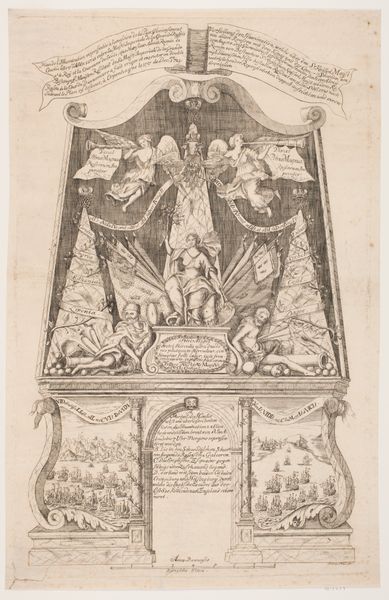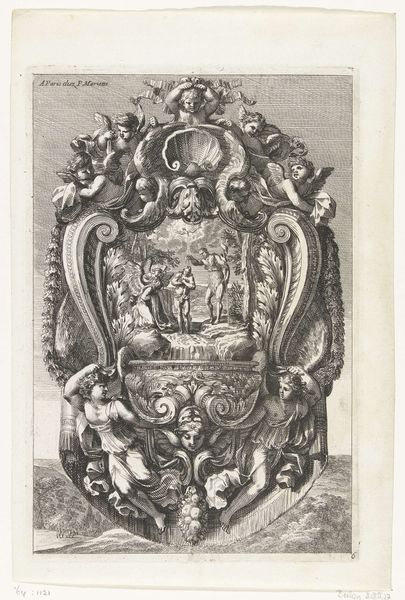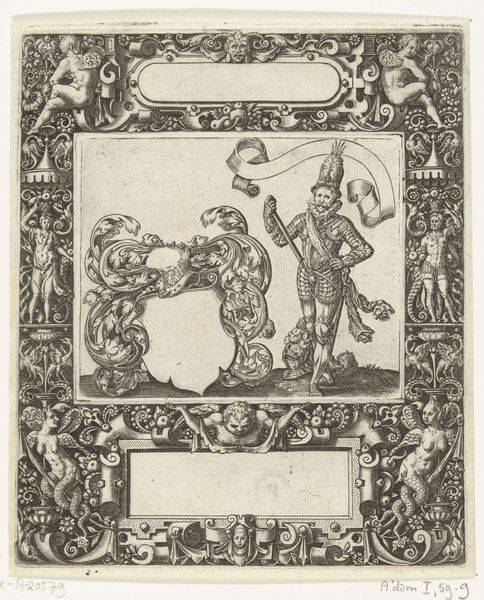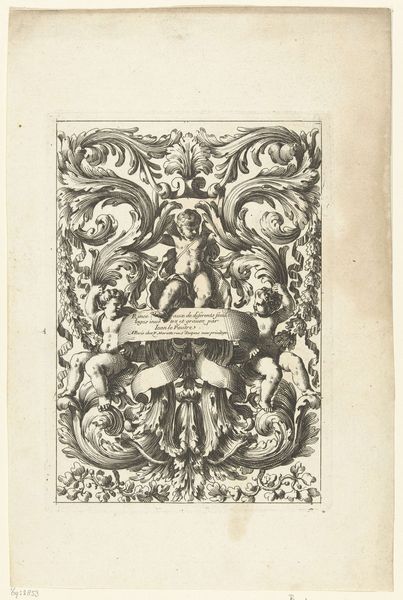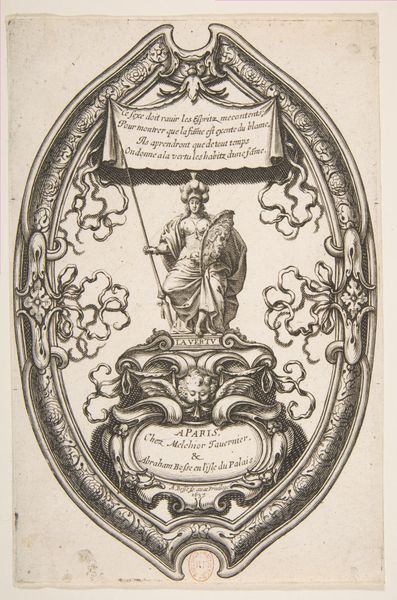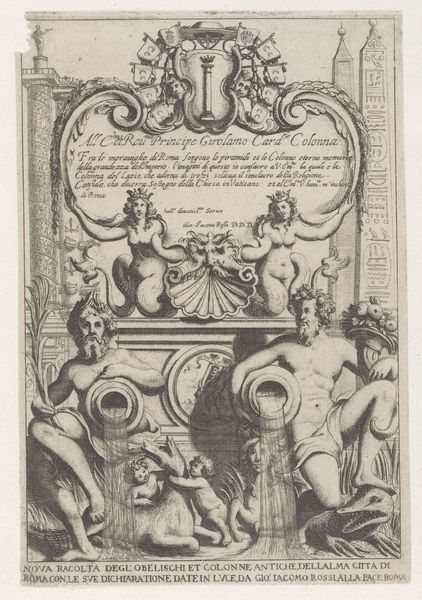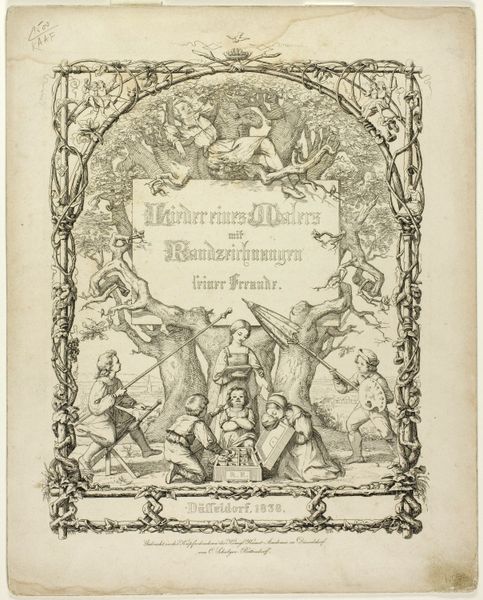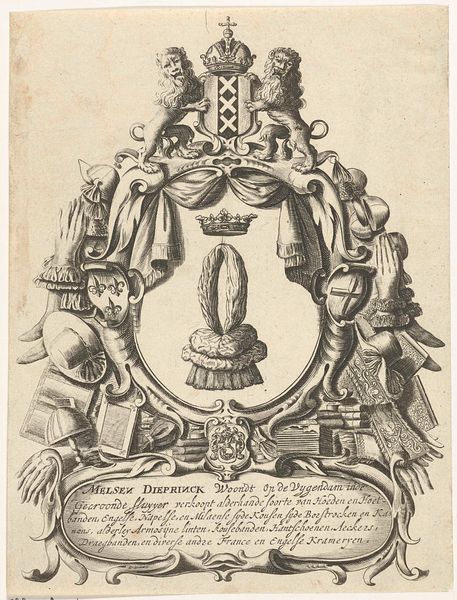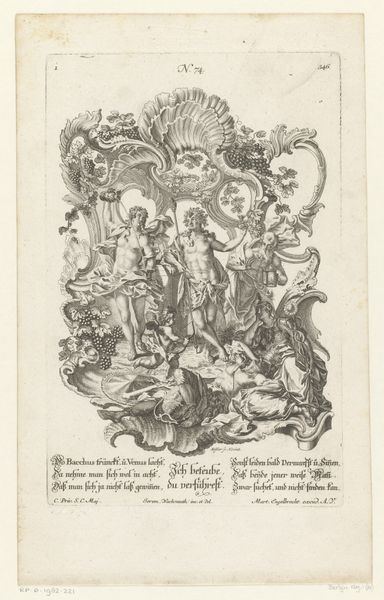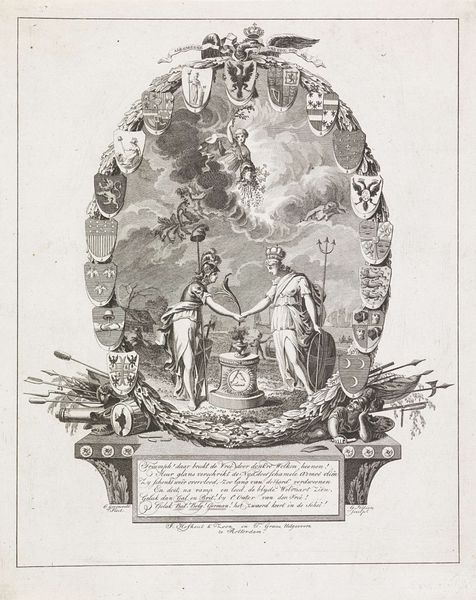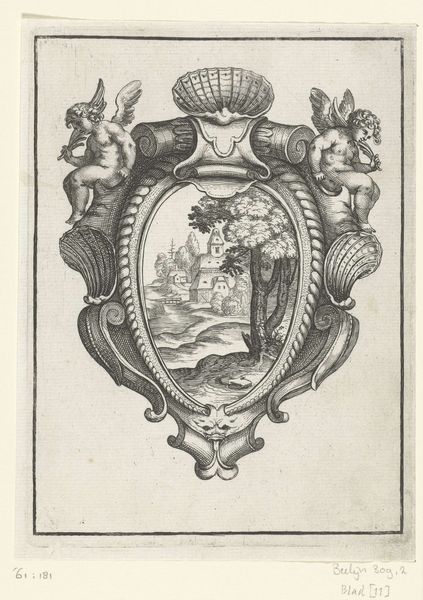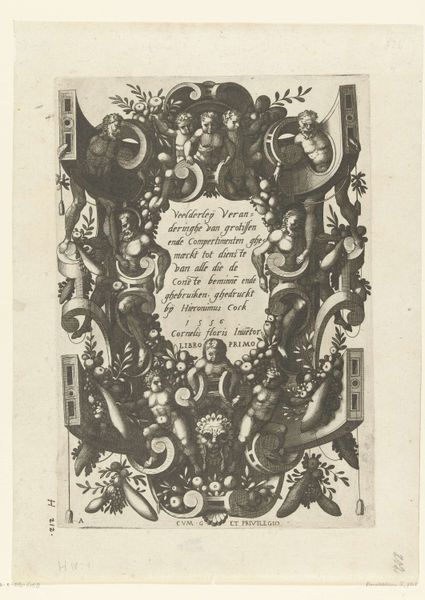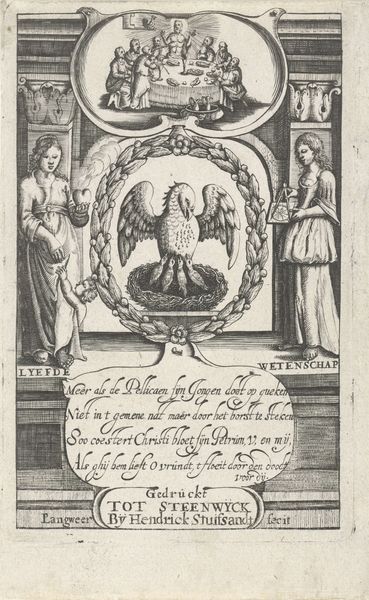
Blazoen of nieuwjaarskaart van de Haarlemse rederijkerskamer De Pellicaen 1597 - 1617
0:00
0:00
jacobmatham
Rijksmuseum
print, engraving
# print
#
old engraving style
#
figuration
#
history-painting
#
northern-renaissance
#
engraving
Dimensions: height 96 mm, width 80 mm
Copyright: Rijks Museum: Open Domain
Curator: What strikes me first is the sheer intensity of detail packed into this small print. It feels both incredibly personal and symbolic, as if peering into a world brimming with allegorical weight. Editor: That's precisely what’s captivating. We're looking at a blazon, or perhaps a new year's card, created by Jacob Matham somewhere between 1597 and 1617. The Rijksmuseum holds this small treasure, an engraving showcasing the Haarlem Chamber of Rhetoric, "De Pellicaen," or The Pelican. Curator: The pelican is indeed central! Beneath the crucified Christ, the bird tears at its own breast. It’s a potent symbol of sacrifice and devotion, reminiscent of Renaissance emblem books I always poured over as a young painter. Editor: Exactly! The pelican as a symbol of Christ, self-sacrificing for humanity, runs deep. Those two figures flanking the cross seem almost classical, perhaps representing faith and reason, each holding their own emblematic staffs, witnessing the act of sacrifice. They are nestled within an orb decorated by vegetal motifs crowned by a heraldic composition in the upper portion. Curator: I find the text below particularly evocative, a fragment that reads, “…d’oprechte PELICAEN…Klingt thonth dat TROV MOET BLYCKEN.” My Dutch is rather rusty, but the essence feels to be "the righteous Pelican, making known, that trust must appear/become clear"? I hear echoes of truth and visibility in that fragment. Editor: You’ve captured its spirit perfectly. These rhetoric chambers, societies devoted to literature and debate, often used complex imagery to express philosophical and moral ideals. This image then embodies the redemptive act of trust, figured as both divine sacrifice and as an act of truth-telling or revelation. And like you said the juxtaposition of Christian, humanistic, and at times mythological allegories create new connections between different systems of meaning making! Curator: This almost hidden scene behind Christ feels like a miniature play of shadows, another crucifixion with miniature observers that offers another, maybe personal, perspective? I wonder, as well, about Matham's hand in this. Is it entirely his original concept? Editor: Often, printmakers worked after designs by other artists. So it's plausible that Matham engraved someone else's conception, or, he brought the "new scene" element as part of his creative twist! In any case, it does trigger fascinating meditations. Curator: In the end, it feels that it whispers to us from across time, urging us to contemplate those threads of faith, sacrifice, and trust – how powerfully visual symbols embed themselves in cultural memory! Editor: It does, doesn't it? Leaving me ponder, also, that peculiar blend of stoicism and baroque flair - not dissimilar to life, is it!
Comments
No comments
Be the first to comment and join the conversation on the ultimate creative platform.
